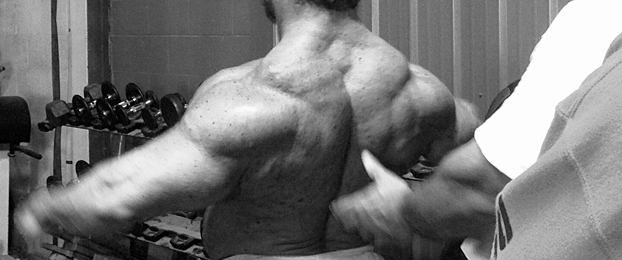
Roughly 10–15 times per week, I get emails from folks who claim that they have shoulder “impingement.” Honestly, I roll my eyes the second that I read these emails. Don’t get me wrong—I’m not making light of their pain. It’s just that it drives me crazy when doctors throw this blanket statement out there.
I will be 100 percent clear with the following statement—impingement is a physiological norm. Everyone—regardless of age, activity level, sport of choice, acromion type, gender, or you name it—has it. Don’t reach up to touch that mouse on your computer. You’ll aggravate your impingement and your supraspinatus will explode! And don’t scratch that itch on the back of your neck. Your impingement will go crazy, and your labrum will disintegrate!
Don’t believe me? A 1994 study by Flatow and colleagues verified that impingement was a physiological norm. Everyone gets it (1). Yes, this has been out for almost 15 years now. So, the next logical question is why do some people have pain with impingement while others don’t?
In reality, there are several factors that dictate whether or not someone is in pain. They include:
- Tissue quality: The most “impinged” structures (typically the supraspinatus, infraspinatus, and long head of the biceps tendon) are more likely to break down in older age than they are in earlier years. Younger individuals can regenerate faster even when overall stress on the tissues is held constant. So how you handle a 50-year-old with “impingement” is going to be somewhat different from how you handle a 15-year-old with “impingement.”
- Degree of elevation: The more one abducts or flexes the humerus, the greater the degree of impingement. This is why folks need to start in a more adducted (arm at side) position early on in rehabilitation.
- Acromion type: Flat (type I) acromions have significantly less contact area with the rotator cuff tendons than hooked (type 2) or beaked (type 3) acromions.
These structures may change over time due to…
- Bone spurs: Bone spurs on the underside of the acromion will increase the amount of impingement.
- Strength of the rotator cuff: The stronger the cuff, the better its ability to depress the humeral head and minimize this impingement.
- Scapular stability: The more stable the scapula, the more likely it is to posteriorly tilt and upwardly rotate effectively when the humerus is raised into the zones of greater impingement. This scapular stability includes adequate length of the downward rotators (pec minor, levator scapulae, and rhomboids) with adequate strength of the upward rotators (lower traps, serratus anterior, upper traps).
- Thoracic spine mobility: The posture of the thoracic spine dictates the position of the scapulae, which, in turn, affects impingement as noted in scapular stability. Inside-Out is an awesome product for improving thoracic spine mobility.
- Increased internal rotation: Certain movements that lock the humeral head in internal rotation increase the degree of impingement during dynamic activities. This is why some people can’t bench press early on in their rehabilitation programs yet can do dumbbell bench presses with a neutral grip pain-free. It’s also the reason why upright rows are a stupid exercise in my opinion.
- Breathing patterns: Think about what happens when someone becomes a “chest breather.” The shoulders shrug up and you get extra tightness in the levator scapulae and sternocleidomastoid (among other muscles). In the process, the degree of impingement can increase.
- Other issues further down the kinetic chain: I could go on and on about a variety of issues in this regard, but it’s impossible to be exhaustive so I’ll just give a few examples:If someone has poor core stability in the sagittal plane that is manifested in an inability to resist the effects of gravity during a push-up, the hips will “sag” to the floor. As this happens and the upper body remains strong, the scapulae are shifted into an anterior tilt, which increases the amount of impingement on the rotator cuff. So, weakness and/or immobility in other areas can certainly predispose an individual to shoulder problems.This can also be carried forward to baseball pitchers. We know that shoulder problems are more likely to occur in throwers who have poor lead leg hip internal rotation and knee flexion range-of-motion because it causes the stride leg to open up early, leaving the arm “trailing behind” where it should be.
Speaking of pitchers, a phrase that has been coined with respect to the “unique” kind of impingement you see in them is “internal impingement.” In Part 2 of this article, I’ll discuss the different kinds of impingement and why it’s still a cop-out diagnosis for any health care professional to just say that you have one or the other rather than tell you explicitly what dysfunctions need to be addressed.
References
1. Flatow EL, Soslowsky LJ, Ticker JB, Pawluk RJ, Hepler M, Ark J, Mow VC, Bigliani LU (1994) Excursion of the rotator cuff under the acromion. Patterns of subacromial contact. Am J Sports Med 22(6):779–88.








